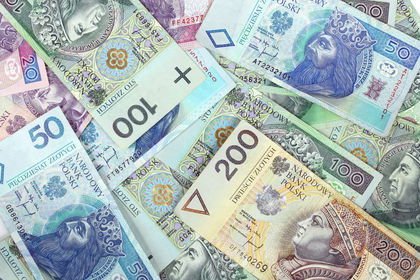Poland - Money

From the end of World War II until 1990, the exchange of the Polish currency, the zloty, was suspended. The government established an elaborate system of several exchange rate regimes. The Polish zloty was valued differently against the same foreign currencies depending on the type of a transaction. For example, western tourists were forced to exchange their currency at a rate making the zloty very expensive, but foreign importers were attracted by competitively priced goods in zlotys. This system of multiple exchange rates ended in the late 1980s.
The liberalization of economic controls during the early 1990s caused the zloty to lose much of its value. By the mid-1990s, US$1 was worth in excess of 10,000 zlotys. Therefore, the National Bank of Poland decided to exchange the banknotes by introducing new coins and banknotes on 1 January 1995. The new Polish zloty was equal to 10,000 old Polish zlotys. The original exchange rate was posted at US$1:2.434 Polish zloty in January 1995. For a time, both the new and the old banknotes were in circulation. Today, old banknotes are no longer accepted for payment.
The National Bank of Poland (NBP) is the sole supplier of money in the economy. Its mission is to implement the monetary policy consistent with maintaining the low inflation rate needed for sustained economic growth. The primary tool used by the NBP was the manipulation of the short-term interest rate charged on loans made to commercial banks. The NBP is independent from the executive branch of government. Its leadership received high praise for its focused approach and has been credited with the high levels of economic activity.
With the adoption of the market economy, Poland opened its stock exchange. The Warsaw Stock Exchange
| Exchange rates: Poland | |
| zlotys per US$1 | |
| Dec 2000 | 4.3126 |
| 2000 | 4.3461 |
| 1999 | 3.9671 |
| 1998 | 3.4754 |
| 1997 | 3.2793 |
| 1996 | 2.6961 |
| SOURCE: CIA World Factbook 2001 [ONLINE]. | |
was, ironically, located in the building built specially as the headquarters of the Polish United Workers Party (a Soviet-style communist party). The increasing popularity of the stock exchange, the growing number of traded stocks, and the volume traded have forced it to move to a new, bigger facilities in recent years. Besides stocks of individual companies, several mutual funds have been established. Their popularity has increased because capital gains and dividends are tax-free in Poland.
At the end of 1999, the number of companies listed on the Warsaw Stock Exchange was 119, more than twice the number of those traded in 1995. The value of transactions more than tripled in the same time period. An average number of transactions per session on the main market was about 4,100 in 1999. The main market requires that companies exist for a minimum period of time and meet standard capital requirements. The parallel market trades shares of companies unable to meet the main market requirements, but which issue enough shares to guarantee liquidity . A total of 61 companies were listed on this market at the end of 1999. Finally, the free market trades shares of companies which meet similar, but less rigorous requirements than those expected from companies traded on the other 2 markets. At the end of 1999, this market listed 26 companies after 2 years in existence.
The Warsaw Stock Exchange Index (WIG) relates the current market value of companies listed on the main market to the value of companies quoted on the first session of the stock exchange on 16 April 1991. The initial level of the index was 1,000 and rose to 18,083.6 at the end of 1999.
Poland also has an active bond market. The government began issuing securities to finance the budget deficit in the early 1990s and gradually introduced short-, medium-, and long-term fixed rate treasury bonds. Variable rate bonds have been also introduced. Over time, the government has been issuing mostly variable rate bonds. This trend is reflected in changes in volume traded. In 1995, for example, the majority of transactions involved 5-year fixed rate bonds, but in 1999 the majority involved 3-year variable bonds. Overall, during that period, the government issued less bonds and the value of traded bonds in 1999 was roughly one-fourth of that in 1995. Traders and the public preferred trading at the stock exchange.
WHAT ARE THEY WORTH
Can I exchange it from Bangladesh?
If it's possible so Please inform me.